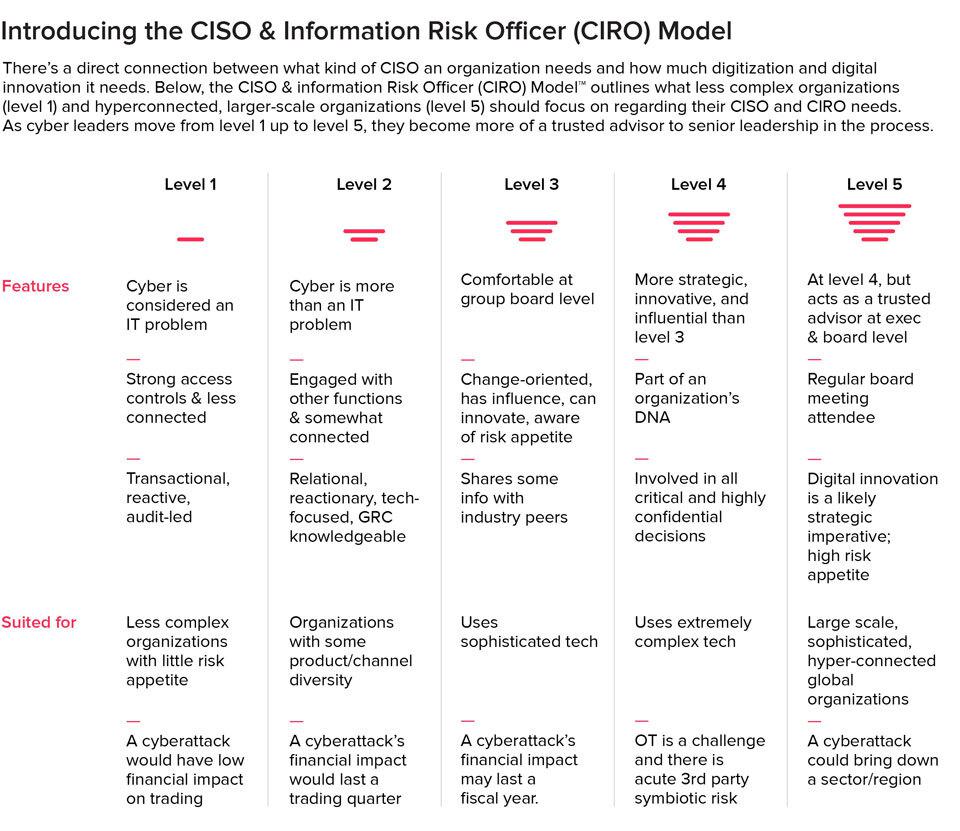Written by Tim Cook
In our world’s digital landscape, cyberattacks have escalated in both frequency and sophistication, posing significant threats to organizations worldwide. Recent reports indicate that cybercriminals are increasingly leveraging advanced artificial intelligence tools to enhance their attack strategies.
The financial repercussions of these breaches are substantial. In 2024 alone, ransomware attacks led to the compromise of 195 million records, with organizations paying a total of $133.5 million to attackers. Such incidents not only result in immediate financial losses, but also cause long-term damage to a company's reputation and erode customer trust.
To proactively address these evolving threats, organizations are recognizing the critical role of a Chief Information Security Officer (CISO). A CISO is responsible for developing and implementing comprehensive cybersecurity strategies, ensuring that the organization stays ahead of potential threats. However, merely appointing a CISO is not sufficient. It's imperative that the CISO is integrated into the executive leadership team, empowered to make strategic decisions, and provided with the necessary resources to effectively manage cybersecurity risks.
The cyber questions that matter
Your organization’s biggest cyber risk? Not having a CISO. Bringing one on isn’t just a recommendation – it’s a necessity. This expert will equip your organization to detect and mitigate critical security risks, keeping you ahead of constantly evolving cyber threats by tackling key questions such as:
- Who is targeting your data?
- What strategies are they using?
- Have they attempted to breach your company before, and how?
- What type of information are they after?
- What are their motives?
- When is your company most vulnerable?
- Will a successful attack be due to skillful hackers or gaps in your security measures?
Despite the growing awareness of cybersecurity's importance, a significant number of companies remain complacent. A report from the World Economic Forum highlighted that many organizations underestimate the financial and reputational losses resulting from cyberattacks, leading to inadequate investment in cybersecurity measures. This complacency is particularly concerning given the increasing complexity of supply chains and the rise of AI-driven cyber threats.
Why every CEO needs a CISO
CISOs are critical in helping organizations anticipate, reduce, and manage digital risks - those that could make or break your business. A strong CISO leads both high-level executive discussions and teamwide efforts on risk management. But for your CISO to truly excel, they need to be fully integrated into the executive team - a step surprisingly overlooked by many companies.
- Global cybercrime costs have surged from $3 trillion in 2015 and are projected to his $10.5 trillion annually by 2025 – making it he world’s third-largest economy, behind only the United States and China.
- A vast majority (96%) of CEOs recognize the critical role of cybersecurity, viewing it as a key driver of organizational growth, stability, and competitiveness.
- Only 33% of CEOs strongly believe that they have a thorough understanding of the ever-evolving cyber threat landscape, leaving many uncertain about how to tackle the risks involved. Rapidly advancing innovations, like generative AI, are expected to add new layers of complexity.
A CEO’s ability to drive growth and stability depends on securing the company’s most valuable assets - its data, systems, and reputation. A CISO serves as the frontline defense, proactively identifying risks, eliminating threats, and ensuring cybersecurity aligns with business strategy. Without one, the question isn’t if an attack will happen, but when and how costly it will be.
Determining the right CISO for your organization
Different organizations require different capabilities from their CISOs, making it essential to identify the right fit for effective risk mitigation. To address this challenge, a five-level CISO maturity model was developed using psychometric data, artificial intelligence, and facial expression detection. This framework creates a psychological profile that is then compared to the attributes of a typical CISO, allowing IT leaders to assess their organization's cybersecurity maturity and determine the necessary steps for advancement.

Not every organization requires a Level 5 CISO. Smaller businesses may only need a Level 1 CISO to oversee IT security and infrastructure - a practical and valid approach. However, larger enterprises, particularly those in financial services, operate in a more complex cyber landscape. For these organizations, cyber threats pose risks not only to internal systems but also to supply chains, adjacent industries, and even societal stability.
A Level 5 CISO is equipped to navigate these challenges, possessing both deep technical expertise and the ability to communicate risks effectively to nontechnical stakeholders while driving security initiatives across the entire organization.
Understanding your needs starts with assessing your exposure risk. How much will your industry’s risk evolve over the next five to 10 years? If your business isn’t expanding or increasing in complexity, a higher-level CISO may not be necessary.
CISO succession: future-proof security
When selecting the appropriate CISO, it's imperative to incorporate succession planning into your strategy. Given the high demand for skilled CISOs, organizations must prepare for potential departures. A sudden vacancy can leave a company vulnerable, underscoring the need for a robust succession plan. Succession planning for CISOs is often lacking, which can lead to increased risks during transitions.
To prevent this, it's advisable to implement a comprehensive development program aimed at grooming internal candidates over a three-year period, ensuring leadership continuity and sustained cybersecurity resilience.
As cyber threats continue to evolve, organizations must prioritize cybersecurity by appointing qualified CISOs, integrating them into the executive team, and investing in advanced security measures. By doing so, they can decrease potential risks, protect their reputation, and maintain the trust of their customers in our robust and ever-changing digital world.
Need to revamp your cybersecurity strategy with the perfect CISO?
Learn more from Tim Cook, Partner and Acertitude’s Cybersecurity Practice Leader.
Never miss insights
Stay in the know with our thought leadership


